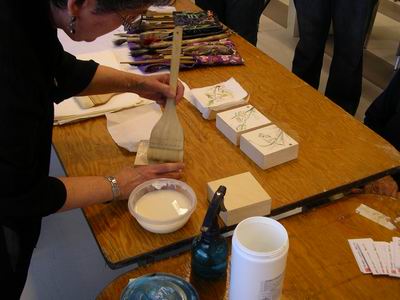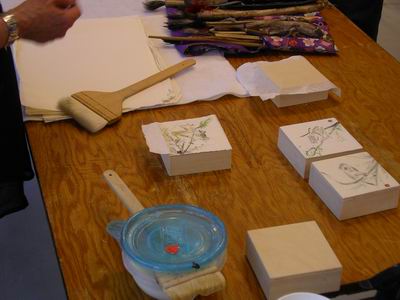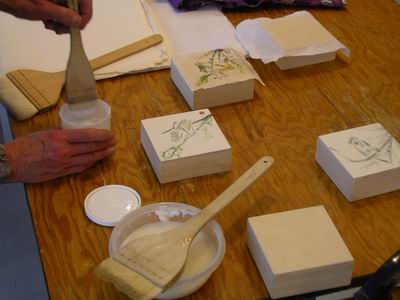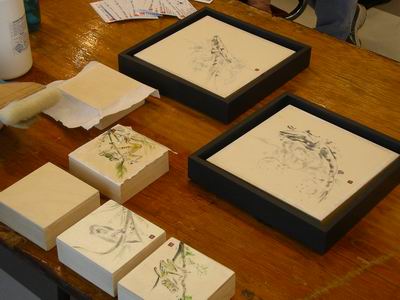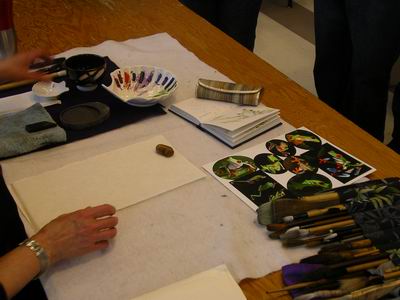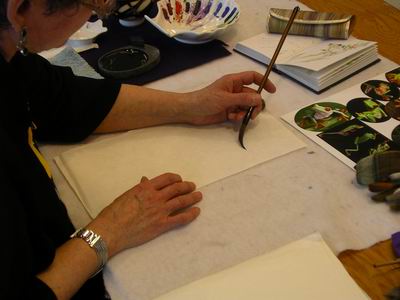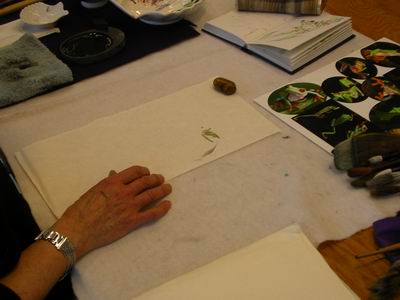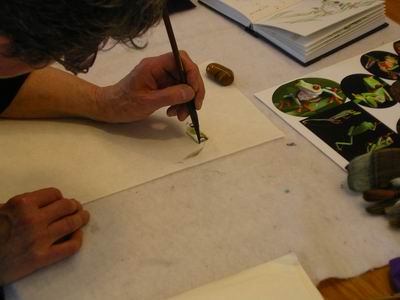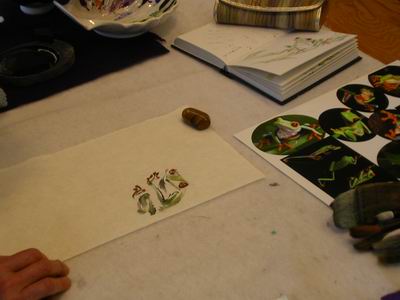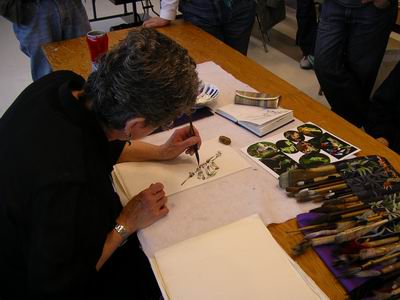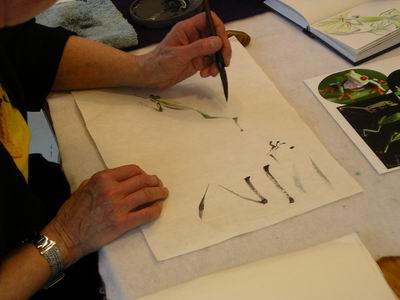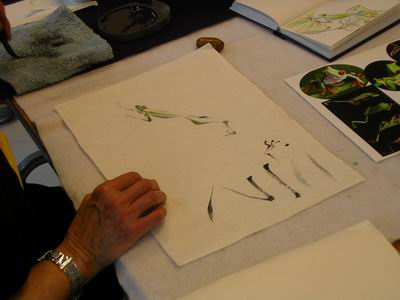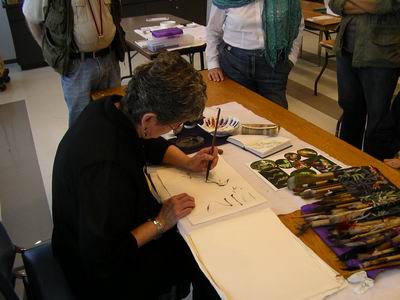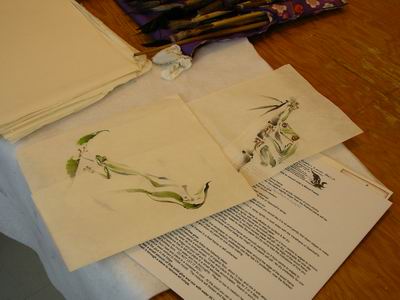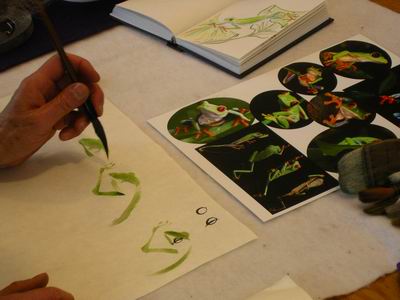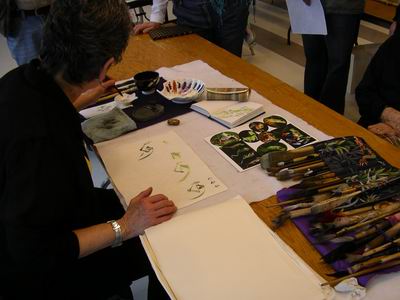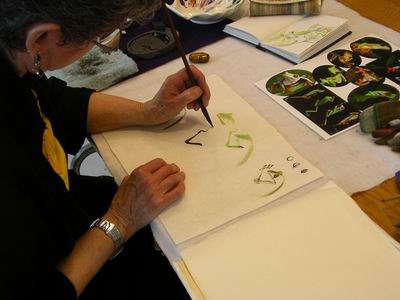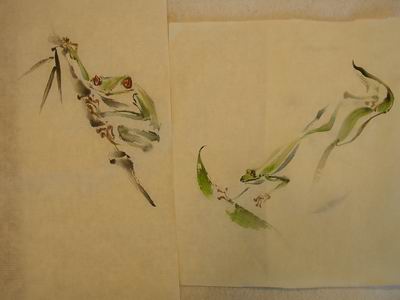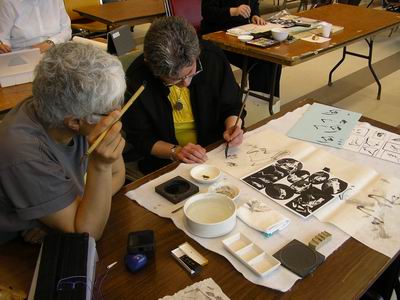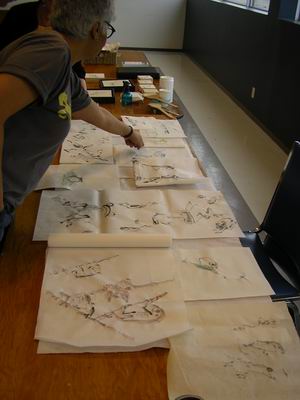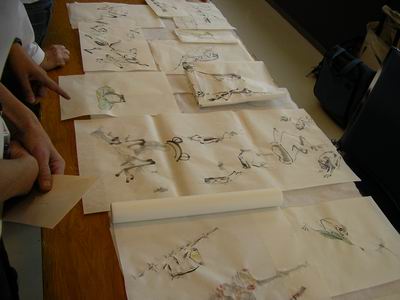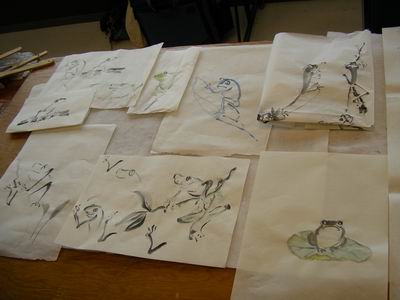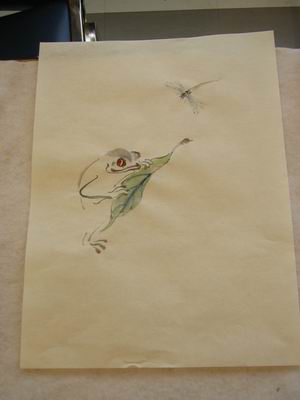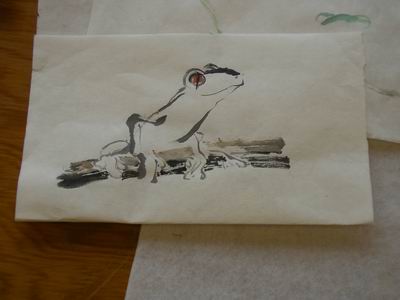Frogs with Roslyn Levin - May 10th, 2014
Frogs are amphibians that captivate us as children yet never leave our imaginations as adults. We find them patiently waiting for a fly around ponds, but frogs are found throughout the world. In fact there are almost 5,000 types of frogs. Roslyn Levin has painted many distinctive frogs, which have been shown at our exhibition.
Roslyn began her workshop though by showing us how to mount our paintings at a reasonable cost. Start with acid-free glue on a wood frame box. Roslyn Levin uses Yes! for the glue. The wood frame boxes can be bought from an art store.
A rice paper base is added. When it dries, Roslyn used a block of sandpaper to remove the excess paper. Then acid-free glue is added to the dried paper and the painting is moistened and mounted.
Once mounted and dried, the excess paper is removed with the sandpaper block. Finally, Roslyn Levin adds a thin layer of an acrylic medium, semi-gloss gel. Roslyn prefers TriArt UV Protective Medium semi-gloss. This acrylic medium is a way of protecting your painting similar to the glass in a traditionally mounted sumi-e painting. However, you have a painting without a glass reflection.
The result of the wood frame mounting technique is a professionally presented painting for a low cost plus your time. Roslyn sometimes adds a wood border or float frame for a finished presentation at an exhibition. To read the details of Roslyn Levin's mounting technique, see Mounting Sumi-e Paintings on a Wood Frame.
Roslyn Levin then turned to the frog. There are many frogs to study by searching the Internet. Some tree frogs particularly interested Roslyn Levin.
Begin by using the side of the brush to create the head.
Roslyn then added an outline for the eyes and the body.
Roslyn developed the eyes, which in this tree frog were red.
The legs and pads were added to complete the frog.
To complete the composition, Roslyn Levin added a bamboo branch for the tree frog.
A second frog in a stretched position followed.
While working on the legs for that frog, Roslyn Levin demonstrated the essential brush strokes that she uses. Often, Roslyn paints a leg, a body or a branch in one continuous brush stroke. However, the line is made large at points by applying pressure.
Roslyn added leaves to fill out the composition.
Both of these paintings resulted in distinctive frogs with their own personalities.
Another painting broke the frog into its parts such as the head, eyes, and legs.
Roslyn used continuous lines with pressure at times to get the right effect for muscles and joints.
The pads at the end of the legs are done by a pause and some pressure on the brush.
This painting gave everyone in the workshop a chance to paint a reasonable frog!
The two frogs seemed like two characters as well.
As the workshop participants started their own frogs, Roslyn provided some tips.
We had a frog show-and-tell session.
The frog workshop generated many creative looking frogs!
There were contemplative frogs and energetic frogs.
This frog was watching or maybe waiting for a dragonfly.
This frog rested happily on a log.
You can learn more about Roslyn Levin in the links section.
